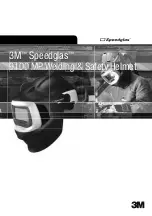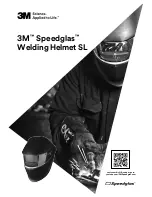
INSTALLAZIONE
Gli apparecchi vanno installati su fissaggi idonei a supportarne il peso e avvitati
con viti di fissaggio sui fori predisposti dal costruttore. Evitare che la macchina si
sposti o vibri nella sua posizione, mettere in sicurezza le viti contro un eventuale
allentamento. Tutte le operazioni devono essere eseguite da personale esperto. Il
montaggio delle tubazioni deve essere conforme alla normativa EN 378; devono
essere previsti dispositivi di scarico contro l’espansione dei liquidi; lo spazio libero
intorno alla macchina deve essere sufficiente per eseguire le regolari operazioni di
manutenzione ed eventuali interventi di riparazione.
La macchina deve poter essere bloccata in caso di guasto e i dispositivi per deviare
il fluido devono poter essere azionati da un punto sicuro. Gli impianti elettrici per
l’azionamento dei ventilatori, per l’illuminazione, per i sistemi di allarme ecc, devono
essere realizzati considerando la formazione di condensa, secondo la normativa EN
378.
Utilizzare brasatura forte per tutti i raccordi, i collegamenti tra i tubi deve essere
realizzato utilizzando da una estremità il tubo allargato saldato al successivo con
brasatura capillare.
Evitare surriscaldamenti durante la brasatura, utilizzare gas protettivo per evitare
la formazione di scaglie e al termine dell’installazione dei tubi, prima di collegare la
macchina, eseguire una corretta pulizia interna e una prova di pressione.
In zone particolarmente ventose prevedere l’utilizzo di controventature e
studiare il posizionamento della macchina al fine di non comprometterne il buon
funzionamento.
Prima di sollevare i prodotti, controllare l’integrità strutturale degli organi di
sollevamento e accertarsi del corretto fissaggio ai ganci della macchina. La
movimentazione delle unità può essere fatta mediante uno o più carrelli elevatori
in base alle dimensioni, verificando che la lunghezza delle forche sostenga
completamente il prodotto. In alternativa può essere fatta per mezzo di gru
servendosi delle apposite staffe, posizionate sulla parte superiore della macchina.
I collegamenti alla linea di alimentazione elettrica devono essere conformi alle norme
vigenti nel paese di utilizzo, inoltre l’installatore deve provvedere a predisporre tutti i
dispositivi richiesti per la sicurezza e per la realizzazione a regola d’arte dell’impianto.
Durante le operazioni di ribaltamento:
›
accertarsi che le funi di sollevamento siano in tiro verticalmente
›
accertarsi che la base della macchina sia bloccata con dispositivi atti ad evitare lo
scivolamento della stessa
›
non sostare nelle zone operative di ribaltamento.
Per i modelli con convogliatori apribili, dopo averli posizionati orizzontalmente nella
posizione di lavoro, togliere le viti che fissano i convogliatori alla struttura. Il fissaggio
serve unicamente per evitare il disassamento dei convogliatori durante le fasi di
trasporto e movimentazione.(Fig. 1)
INSTALLATION
Die Geräte werden an Befestigungen installiert, die für das Gewicht der Geräte
geeignet sind, und mit Schrauben an den vom Hersteller vorgesehenen Bohrungen
verschraubt. Sicherstellen, dass das Gerät verrutschen oder vibrieren kann. Die
Schrauben mit Schraubensicherung gegen ein Lösen sichern. Alle Eingriffe müssen
von erfahrenem Fachpersonal durchgeführt werden. Die Montage der Leitungen
muss den Vorgaben der Norm DIN EN 378 entsprechen. Es müssen Vorrichtungen
vorgesehen, die ein Ablassen der Flüssigkeit bei Ausdehnung gewährleisten. Um
das Gerät herum muss ausreichend Freiraum sein, um eine ordnungsmäßige
Durchführung der Wartung und eventueller Reparaturen zu gewährleisten.
Das Gerät muss bei Defekt blockiert werden können und die Vorrichtungen zur
Umleitung des Fluids müssen sich von einer sicheren Position aus betätigen lassen.
Die elektrischen Anlagen für die Ventilatoren, die Beleuchtung, die Alarmsysteme
usw. müssen unter Berücksichtigung der Kondensatbildung nach Vorgabe der Norm
DIN EN 378 durchgeführt werden.
Alle Anschlüsse müssen gelötet werden. Für die Verbindung der Rohrleitungen muss
das erweiterte Ende der einen Rohrleitung an das Ende der nächsten Rohrleitung
kapillar gelötet werden.
Beim Löten muss eine Überhitzung vermieden werden. Es muss Schutzgas
verwendet werden, um die Bildung von Spritzern zu vermeiden. Nach der Installation
der Leitungsrohre müssen die Rohre innen sauber gemacht und einem Drucktest
unterzogen werden, bevor sie an das Gerät angeschlossen werden.
An besonders windigen Standorten muss von Windschutz Gebrauch gemacht und
das Gerät so aufgestellt werden, dass die Funktionstüchtigkeit des Geräts nicht
beeinträchtigt ist.
Vor dem Anheben vom Gerät sicherstellen, dass sich die Hebevorrichtungen
in einem einwandfreien Zustand befinden und das Gerät korrekt angeschlagen
worden ist. Das Gerät kann je nach Größe mit einem oder mehreren Gabelstaplern
transportiert werden. Es muss sichergestellt werden, dass die Gabel ausreichend
lang ist, um das Gerät komplett abzustützen. Alternativ dazu kann das Gerät
mit einem Kran und geeigneten Bügeln angehoben werden, die oben am Gerät
angebracht werden müssen.
Die Anschlüsse an die Stromversorgung müssen den im Installationsland geltenden
Vorschriften entsprechen. Ferner muss der Monteur alle für die Sicherheit und
fachgerechte Realisierung der Anlage vorgeschriebenen Vorrichtungen vorsehen.
Prozedur beim Kippen:
›
Sicherstellen, dass die Hebeseile vertikal gespannt sind.
›
Sicherstellen, dass die Basis des Geräts mit Vorrichtungen blockiert ist, die
verhindern, dass das Gerät wegrutscht.
›
Im Bereich, in dem das Kippen erfolgt, dürfen sich keine Personen aufhalten.
Bei Modellen mit Luftkanälen, die sich öffnen lassen, müssen die Schrauben
entfernt werden, mit denen die Luftkanäle an der Struktur befestigt sind, nachdem
die Luftkanäle in eine horizontale Position gebracht worden sind. Die Befestigung
dient nur dazu, ein Verschieben der Luftkanäle während des Transportierens zu
verhindern.(Abb. 1)
INSTALLATION
The equipment must be installed on fastenings suitable to bear the weight and
bolted with fixing screws into the holes provided by the manufacturer. Make sure
that the machine does not move or vibrate in its position; secure the screws so that
they do not get loose. All operations must be performed by experienced personnel.
Pipes are to be assembled in compliance with EN 378; drainage devices against the
expansion of the liquids must be provided; the free space around the machine must
be enough to carry out regular maintenance and any repair operations.
The machine must be able to be locked in case of failure and the devices to deviate
the fluid must be able to be operated from a safe position. The electrical systems for
the activation of the fans, lighting, alarm systems, etc. must be made considering
the formation of condensation, according to EN 378.
Use strong brazing for all junctions, the connections between the pipes must be
made from one end using the expanded tubing welded to the next capillary brazing.
Avoid overheating during brazing, use protective gas to prevent the formation of
scales and after the installation of the pipes, before connecting the machine, carry
out proper internal cleaning and a pressure test.
In particularly windy areas, use bracings and study the positioning of the machine in
order not to compromise the correct operation.
Before lifting the products, check the structural integrity of the lifting equipment and
make sure that they are properly fastened to the machine hooks. The unit can be
handled by using one or more forklifts according to the size. Make sure that the
length of the forks fully supports the product. Alternatively, it can be done by a crane
using the special brackets, placed on top of the machine.
The connections to the power supply must comply with the legislation in force in the
country where the product will be used. The installer must also supply and fit all the
safety devices required as well as those for installing the system up to standard and
in a workmanlike manner.
During overturning operations:
›
Make sure that the lifting ropes are taut vertically
›
Make sure that the base of the machine is locked in place with devices designed
to prevent slipping
›
Do not remain in the operation overturning areas.
For models with openable shrouds, after placing them horizontally in the working
position, remove the screws that fasten the shrouds to the frame. The fixing only
serves to prevent the misalignment of the shrouds during transport and handling.
(Fig. 1)
INSTALACIÓN
Los equipos deben instalarse en fijaciones adecuadas para soportar el peso y
atornillados con tornillos de fijación en orificios dispuestos por el fabricante. Evitar
que la máquina se mueva o vibre en su posición, verificar que los tornillos no se
hayan aflojado. Todas las operaciones deben ser efectuadas por personal calificado.
En montaje de la tubería debe observar las prescripciones de la normativa EN 378;
deben estar previstos dispositivos de descarga por la expansión de los líquidos;
el espacio libre alrededor de la máquina debe ser suficiente para efectuar las
operaciones regulares de mantenimiento y eventuales intervenciones de reparación.
La máquina debe poder bloquearse en caso de avería y los dispositivos para
desviar el fluido deben poder accionarse desde un lugar seguro. Las instalaciones
eléctricas para el accionamiento de los ventiladores, para la iluminación, para los
sistemas de alarmas, etc., deben ser realizadas considerando la formación de agua
de condensación, según la normativa EN 378.
Emplear soldadura por aleación fuerte en todos los empalmes, la conexión entre
tubos debe realizarse utilizando en una extremidad el tubo ensanchado soldado al
sucesivo con soldadura capilar.
Evitar recalentamientos durante la soldadura por aleación, utilizar gas de protección
para evitar la formación de viruta y al finalizar la instalación de los tubos, antes
de conectar la máquina, efectuar una correcta limpieza interna y una prueba de
presión.
En zonas particularmente ventosas prever el uso de arriostramientos y analizar la
posición de la máquina para no comprometer el buen funcionamiento.
Antes de levantar los productos, controlar la integridad estructural de los órganos
de elevación y su correcta fijación a los ganchos de la máquina. El traslado de las
unidades puede efectuarse mediante una o más carretillas elevadoras según las
dimensiones, verificando que la longitud de las horquillas sostenga completamente
el producto. También puede efectuarse mediante grúa utilizando las abrazaderas
correspondientes, ubicadas en la parte superior de la máquina.
Las conexiones a la línea de alimentación eléctrica deben observar las normas
vigentes en el país de uso, además, el instalador debe proveer todos los
dispositivos necesarios para la seguridad y para la correcta realización de la
instalación.
Durante las operaciones de vuelco:
›
Verificar que los cables de elevación sean de tiro vertical
›
Verificar que la base de la máquina esté bloqueada con dispositivos para evitar el
deslizamiento de la misma
›
No detenerse en las zonas operativas de vuelco.
Para los modelos con transportadores extensibles, después de haberlos
ubicado horizontalmente en la posición de trabajo, quitar los tornillos que fijan los
transportadores a la estructura. La fijación sirve únicamente para evitar el desajuste
de los transportadores durante las fases de transporte y traslado.(Fig. 1)
05






































